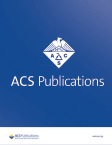摘要 PO3-22-02:高危局部晚期乳腺癌患者的同步化疗与辅助放疗:安全性与疗效
IF 3.4
Q2 PUBLIC, ENVIRONMENTAL & OCCUPATIONAL HEALTH
引用次数: 0
摘要
背景:局部晚期乳腺癌患者局部和远处复发的风险很高,因此需要新的策略来提高辅助放疗的疗效。某些化疗药物具有协同作用,可安全地使残留疾病对放疗放射敏感,同时使用可改善局部控制。我们报告了本机构对高危乳腺癌患者采用同步化疗和辅助放疗的经验。方法:我们对 2006 年 5 月至 2019 年 4 月期间接受化疗、手术和同期化疗-放疗(chemo-XRT)辅助治疗的乳腺癌患者进行了一项回顾性研究。是否将化疗与常规分次辅助放疗相结合取决于医疗服务提供者对患者复发风险的判断。主要结果是局部复发风险(LRR)。次要结果包括无病生存期(DFS)、总生存期(OS)和毒性。局部复发的累积发生率是以远处复发和死亡作为竞争风险来估算的。无病生存期和总生存期采用 Kaplan-Meier 法估算。结果:共有42名患者符合纳入标准,其中35名(83%)患者因初次诊断为乳腺癌而接受治疗,7名(17%)患者因局部复发而接受治疗。在接受初诊治疗的 35 名患者中,大多数人的疾病处于 III 期(91%)。29名患者(83%)接受了新辅助化疗(NAC),所有患者在接受新辅助化疗后都有残留病灶,6名患者(17%)接受了前期初治手术。总放射剂量中位数为 57 Gy(范围为 45-68 Gy),大多数患者接受了区域结节综合照射(25 例,占 60%)。化疗-XRT使用的化疗药物包括卡培他滨(29,69%)、紫杉醇(8,19%)和顺铂(5,12%)。中位随访时间为术后 5 年(范围:4 个月至 16 年)。5年后,LRR的累积风险为7%(95% CI:2-21%)。DFS 为 47%(95% CI:34-65%),OS 为 56%(95% CI:42-74%)。值得注意的是,有多例特殊应答者,10年和15年的OS分别为51%和45%。化疗-XRT耐受性良好,3级毒性(皮炎)为7%,无4级毒性,也未观察到新的毒性信号。结论高风险局部晚期乳腺癌患者同时接受化疗-XRT治疗安全且耐受性良好。化疗-XRT有望降低局部复发的风险:所研究的患者属于高危人群,但只有7%的患者在5年后出现局部复发。还需要对同时化疗-XRT进行进一步的前瞻性评估。表 1.患者特征和预后(N = 42) XX- XX 引用格式:Lynn Symonds, Sasha Swenson, Macklin Nguyen, Daniel Hippe, Hannah Linden, Jennifer M. Specht, WIlliam Gwin, Janice Kim.高危局部晚期乳腺癌患者的同步化疗与辅助放疗:安全性与疗效[摘要]。在:2023 年圣安东尼奥乳腺癌研讨会论文集;2023 年 12 月 5-9 日;德克萨斯州圣安东尼奥。费城(宾夕法尼亚州):AACR; Cancer Res 2024;84(9 Suppl):Abstract nr PO3-22-02.本文章由计算机程序翻译,如有差异,请以英文原文为准。
Abstract PO3-22-02: Concurrent chemotherapy with adjuvant radiation for patients with high-risk locally advanced breast cancer: safety and outcomes
Background: Patients with locally advanced breast cancer are at high risk for locoregional and distant recurrence and novel strategies are needed to enhance the efficacy of adjuvant radiation therapy. Selected chemotherapies act synergistically to safely radiosensitize residual disease to radiation therapy and may improve locoregional control when given concurrently. We report our institutional experience using concurrent chemotherapy with adjuvant radiotherapy for high-risk breast cancer patients. Methods: We conducted a retrospective study of breast cancer patients treated definitively with chemotherapy, surgery, and concurrent chemo-radiation (chemo-XRT) in the adjuvant setting between May 2006 and April 2019. The decision to combine chemotherapy with adjuvant conventionally fractionated radiation was based on provider discretion regarding patient’s risk of recurrence. The primary outcome was risk of locoregional recurrence (LRR). Secondary outcomes included disease free survival (DFS), overall survival (OS), and toxicity. The cumulative incidence of local recurrence was estimated with distant recurrence and death as competing risks. DFS and OS was estimated using the Kaplan-Meier method. Results: A total of 42 patients met inclusion criteria; of these 35 (83%) patients were receiving treatment for their initial breast cancer diagnosis and 7 (17%) patients were receiving treatment for a locoregional recurrence. Of the 35 patients treated in the primary setting, the majority had stage III disease (91%). Twenty-nine patients (83%) received neoadjuvant chemotherapy (NAC) all of which had residual disease after NAC and 6 patients (17%) received upfront primary surgery. Overall median total radiation dose was 57 Gy (range 45-68 Gy) with a majority receiving comprehensive regional nodal irradiation (25, 60%). Chemotherapy agents used for chemo-XRT included capecitabine (29, 69%), paclitaxel (8, 19%), and cisplatin (5, 12%). Median follow-up was 5 years after surgery (range: 4 months-16 years). At 5 years, the cumulative risk of LRR was 7% (95% CI: 2-21%). DFS was 47% (95% CI: 34-65%) and OS was 56% (95% CI: 42-74%). Of note, there were multiple exceptional responders, with OS of 51% at 10 years and 45% at 15 years. Chemo-XRT was well tolerated with 7% grade 3 toxicity (dermatitis), no grade 4 toxicity, and no new toxicity signals observed. Conclusions: Concurrent chemo-XRT for breast cancer patients with high risk locally advanced disease was safe and well tolerated. Chemo-XRT showed promise as a method to decrease risk of locoregional recurrence: the studied patient population was at very high risk, but only 7% of patients had a locoregional recurrence at 5 years. Further prospective evaluation of concurrent chemo-XRT is needed.
Table 1. Patient characteristics and outcomes (N = 42) XX- XX
Citation Format: Lynn Symonds, Sasha Swenson, Macklin Nguyen, Daniel Hippe, Hannah Linden, Jennifer M. Specht, WIlliam Gwin, Janice Kim. Concurrent chemotherapy with adjuvant radiation for patients with high-risk locally advanced breast cancer: safety and outcomes [abstract]. In: Proceedings of the 2023 San Antonio Breast Cancer Symposium; 2023 Dec 5-9; San Antonio, TX. Philadelphia (PA): AACR; Cancer Res 2024;84(9 Suppl):Abstract nr PO3-22-02.
求助全文
通过发布文献求助,成功后即可免费获取论文全文。
去求助
来源期刊

ACS Chemical Health & Safety
PUBLIC, ENVIRONMENTAL & OCCUPATIONAL HEALTH-
CiteScore
3.10
自引率
20.00%
发文量
63
期刊介绍:
The Journal of Chemical Health and Safety focuses on news, information, and ideas relating to issues and advances in chemical health and safety. The Journal of Chemical Health and Safety covers up-to-the minute, in-depth views of safety issues ranging from OSHA and EPA regulations to the safe handling of hazardous waste, from the latest innovations in effective chemical hygiene practices to the courts'' most recent rulings on safety-related lawsuits. The Journal of Chemical Health and Safety presents real-world information that health, safety and environmental professionals and others responsible for the safety of their workplaces can put to use right away, identifying potential and developing safety concerns before they do real harm.
 求助内容:
求助内容: 应助结果提醒方式:
应助结果提醒方式:


